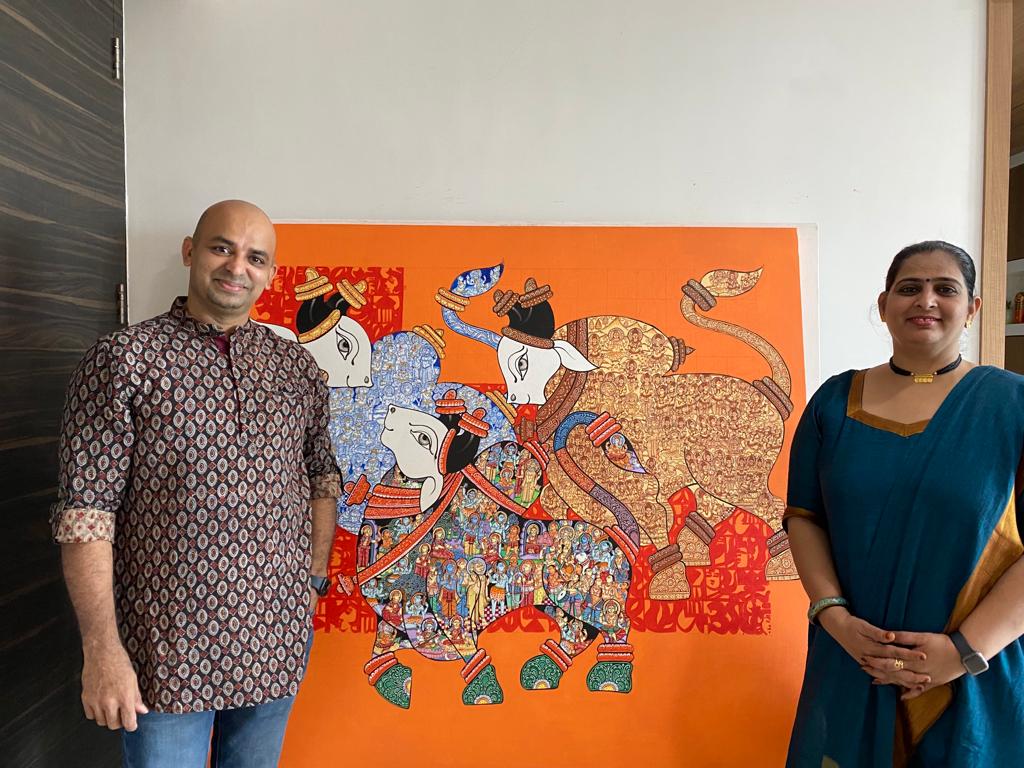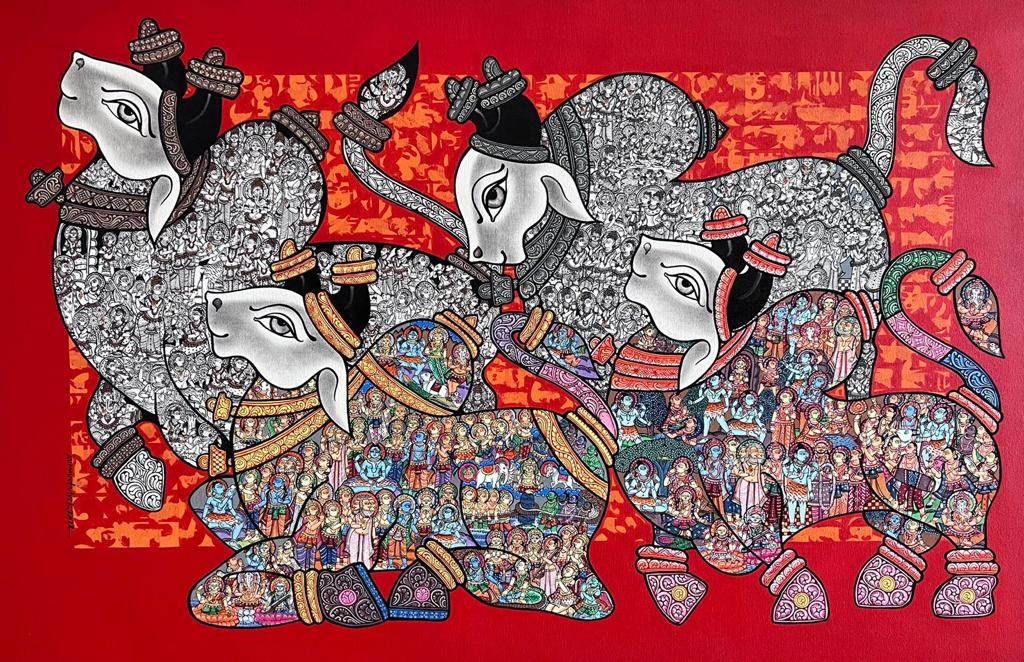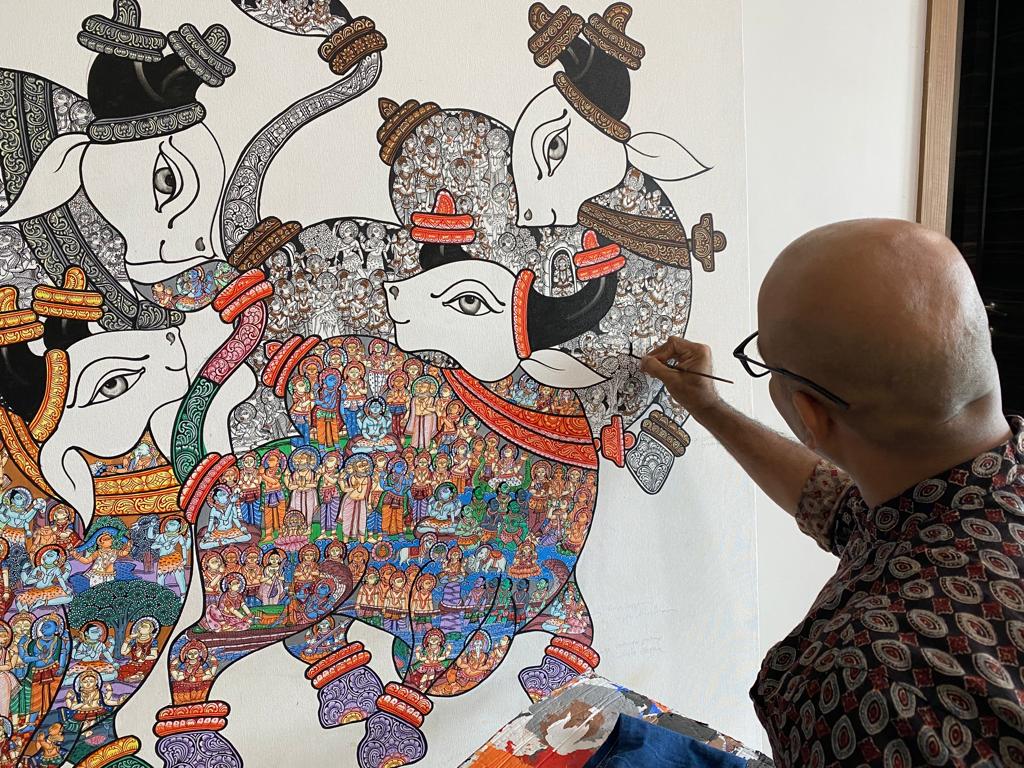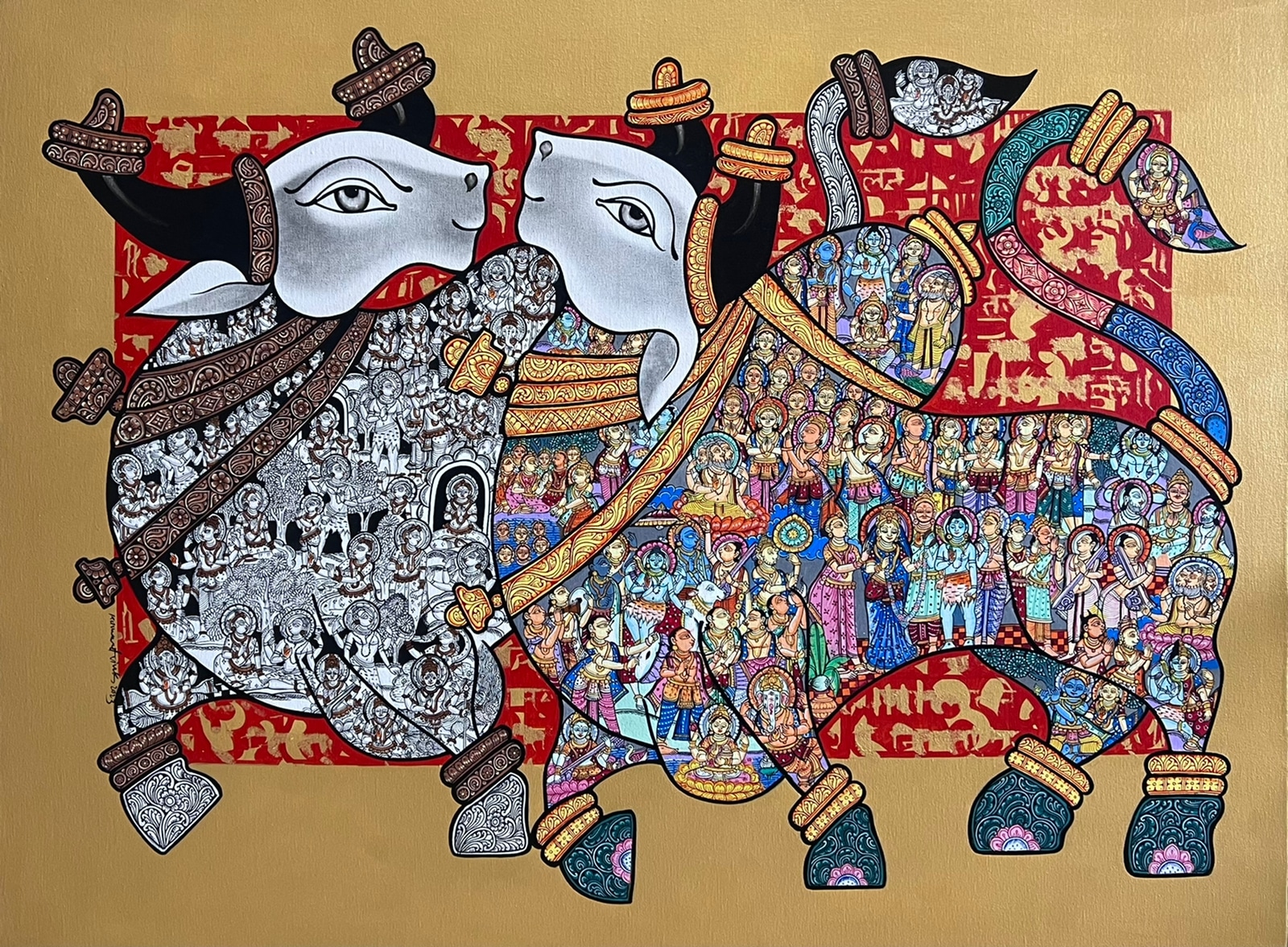
INTERVIEW WITH CONTEMPORARY INDIAN ARTIST VIVEK KUMAVAT
Rising Indian artist Vivek Kumavat grew up in a village in Jalgaon district, in the interior of Maharashtra state. During Vivek’s childhood, his father indulged him when he demonstrated an undeniable talent in drawing, supporting his decision to study art. This early encouragement allowed Vivek to flourish into the contemporary artist we know today, whose exuberant paintings of Nandi, the sacred bull calf and gatekeeper of Lord Shiva, radiate positivity and health.
We invited leading Indian art historian and writer Sandhya Bordewekar to interview Vivek and learn more about why he paints, the role of the Nandi bull in his art and why the Nandi will continue to dance on his canvases for many more years to come!

Vivek, when did you realize that you loved to draw and would like to become an artist?
I loved to draw since childhood. And I sculpted too. The wheels of the bullock carts would get mud stuck on them as they rode the village dirt tracks. This mud would be ground very fine and made good clay. So I would collect this fine mud from the carts’ wheels and fashion little animals and birds, as well as Ganesha images. Everyone would love them!
Later, when I came to the higher classes, my friends and I would cycle to the nearby ancient Ajanta caves about twice a year. While my friends would treat it as a picnic, I would sit in the caves and study and copy the images drawn on the walls by the Buddhists monks, many centuries ago. They held a strange and vibrant attraction, and now that I think about it, they must be my first inspiration to want to spend my life drawing and painting.
That’s when you decided to come to Mumbai?
It was not that easy! My family, of course, expected that the Diploma would help me get a teacher’s job. But fortunately a relative happened to come visiting. He saw my drawings and insisted that I join the JJ School of Art in Mumbai. He was himself a former student, and on his advice, first I looked for a job and then I applied for admission to study Painting.

That’s interesting! What were the years at art school like?
Five years at the JJ School of Art passed in a jiffy. As a student, I participated in several competitive exhibitions and won prizes as well, especially in the prestigious Art Society of India competitions. My forte then was landscapes. I would split a razor blade in two and fix one piece on my painting brush. It gave the ‘knife paint’ effect, heightening the visual appeal of my canvases.
After graduating, almost immediately I could organize my own solo show at the Jehangir Art Gallery. It was such a pleasure to see my work hanging at Jehangir, where for years I had admired other artists’ works!

How did you arrive at the figure of Nandi as the focus of your painting?
I had decided to stay back in Mumbai and continue as a full-time artist. I had received a very good response to my Jehangir solo exhibition; it strengthened my confidence and put money in my pocket. But I had enough of landscapes! I began to experiment with figurative work. That’s when the image of the bull came to my mind.
I had always been attracted to these strong and temperamental animals. I saw bulls as sculptures in temples and loved their form and shape. I made my first charcoal drawing of the Nandi over 10 years ago. I began researching the importance of Nandi in Hindu mythology, in temple architecture, and the relationship between Lord Shiva and Nandi as his vahana (a deity’s vehicle). What surprised me was that in depictions of Nandi, whether as a sculpture or a painting, this powerful animal always has a peaceful look of understanding and calm on its face.
Your Nandi, as well as your other human and animal figures, appear to follow a traditional drawing format. Which conventional Indian painting forms did you draw upon?
Since Nandi was a figure in a religious context, I wanted to explore how such imagery was expressed in traditional Indian art forms such as miniatures, as well as popular folk forms such as pattachitra in Odisha, warli paintings in Maharashtra and kalamkari in Andhra Pradesh. I traveled to these states, met the senior artists who still practiced these art forms, watched them at work and studied their techniques. At the end of it, I took the best from all, mixed them together and created my own signature style Nandi!

Which is your favorite of the Shiv Leela stories?
The story of the Samudramanthana, or Churning of the Ocean. I find it the most delightful as well as challenging. It has several stories within stories, each one more fascinating and imaginative than the last. It gives me a number of natural elements, strange animals, monsters, demons, minor and major gods and goddesses to work with! It is a figurative painter’s dream as well as nightmare.
What is next for you — are you planning to explore other themes as well?
Not in the near future, no. But yes, I want to explore sculptural Nandis. I also want to work with natural dyes. But first, I want to research that thoroughly and carefully. I like my paintings to be bright and colorful, to be joyous. I am able to achieve that now with the standard art colors that I use. I want to see if natural dyes can go a few steps better and give me spectacular results!
Thank you, Vivek!
— Sandhya Bordewekar
To browse our curated collection of contemporary paintings by Indian artist Vivek Kumavat, visit https://laasyaart.com/vivek-kumavat/. If you would like to make an appointment to see these works in person at our Indian art gallery in Palo Alto, please reach out at info@laasyaart.com or +1 650-770-9088.

Leave a Reply
You must be logged in to post a comment.